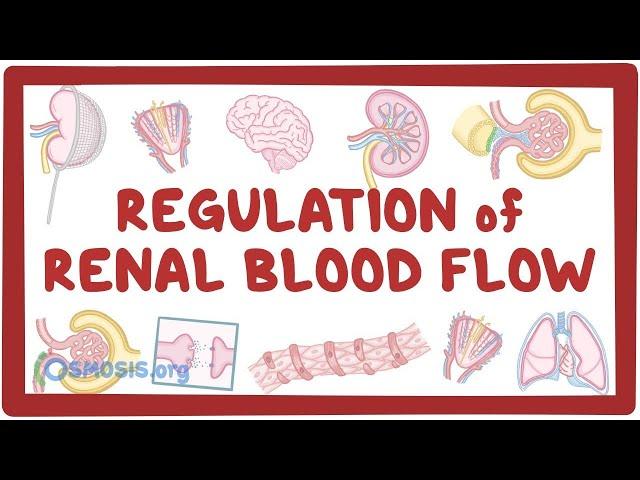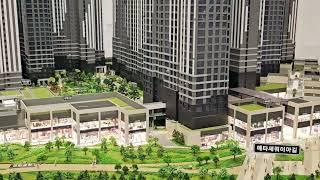Комментарии:

Who experienced blockage because of the prostata? And what happened after this? And are your kidney parameters going back to normal (BUN and creatinin)? I experienced a blockage and I was underwent to TURP in May 2022. My BUN and creatinin-parameters worsened because of the blockage. Is somebody who experienced the same? Returned at you the BUN and creatinin value to normal? Or not more?
is to somebody happened the same as to me? I was already 6 years on BPH medication-finasterid-aglandin, as the retention happened. The Kreatinin and BUN were worsened after the retention. And now the question: In your experience the Kreatinin and BUN were going back AFTER the TURP, or not? Thank you and best greetings from

Fantastic
Ответить
Love your video! I'm a pharmacy student studying for an exam and this is really helpful
Ответить
Great video, but you missed out on mentioning the other, arguably more important, aspect of tubuloglomerular feedback mechanism. When the macula densa cells detect less sodium in the tubular fluids, which usually occurs when GFR is reduced due to low blood pressure, they lead to release of renin from the juxtaglomerular cells, and that eventually leads to increase in GFR and blood pressure.
Ответить
Why doesn't Glomerular Filtration Rate increase despite the lack of autoregulation when blood pressure gets higher than 200 mmHg, while renal blood flow increases drastically? Thanks to whoever can answer me.
Ответить
As a medical student I found it very useful 👌
Thank you so much Osmosis 💓

Hi !I'm Michelle,from hk. I, who is a junior student from Biometical Science, am so excited to know about the lecture
Ответить
OMG! At the beginning you said when blood pressure goes high blood flow goes down. But in the end you said when blood pressure goes up blood flow goes up ! How is that ?
Ответить
Speak very fast😐
Ответить
That's very useful thanks. 👍 Is there any chances to get the notes ... Because it's so useful ig.
Ответить
Currently finishing a renal term. These videos have been super helpful as a refresher!
Ответить
thank yooou❤❤❤! but i have a simple question ( why increasing systemic pressure increased the pressure gradient? i think as a result of increasing systemic pressure both the systemic arterial and systemic venous pressures are going to increase so the different is the same )
Ответить
Thank you your lectures are very helpful ♡
Ответить
My final year project has a lot to do with blood pressure regulation. Thank you guys for helping me out with this 🙏. Truly life savers
Ответить
The tubulo glomerular feedback is wrong and is the other way around beginning with low flow and low GFR that later on causes afferent vasodilation, efferent vasoconstriction, and release of renin. Plus it is not explained thoroughly. Otherwise perfect video
Ответить
did not help at all, if i couldnt underst my professor this videos made it worse!!
Ответить
69 comments before I commented
Ответить
Please tell me the 3 sphincter name in bladder....?
Ответить
WHY ARE WE CALLING THEM Cuh-pill-er-ease
Ответить
Was trying to look up the Renai Circulation song but this works as well
Ответить
Once again... an amazing video. Please don't stop posting!
Ответить
Great explanation and delivery - thanks.
Ответить
BTW, no amount of arterial resistance will prevent a chasing kangaroo from hunting you down. Usain Bolt sustained an average ground speed of 37.58km/h over his world-record-setting 100m bolt in 2009, over 9.58 seconds. Roos will sustain 40 km/h for about 2 km. At that speed, that's about 3 minutes. Ergo, under 10 secs, that roo will tailslap Bolt for his cheeky escape attempt, without breaking a sweat.
Ответить
similar to cognito🤔
Ответить
Very well done…I had to slow it down to x.75 speed coz it was too fast
Ответить
You are the best!
Ответить
Teach told me to watch
Ответить
Thank you for this very well-done and easy to understand video
Ответить
{ هذا خلق الله فأروني ماذا خلق الذين من دونه بل الظالمون في ضلال مبين }
This is the creation of Allah. So show Me what those other than Him have created. Rather, the wrongdoers are in clear error

Best physiology video I've seen.
Ответить
I thought the renal corpuscle only consist of the glomerulus and the glomerular capsule
Ответить
Osmosis makers aren't Australians why do they keep giving the kangaroo example
Ответить
Osmosis is best buddy in med school, I am now in MS2 and its been 1.5 years since I started using Osmosis. OwO
Ответить
Very nice video, helped out a lot
Ответить
💓🙏🩷
Ответить
SIR PLEASE!!!I have a doubt sir ✋🏻
Do both Afferent and Efferent arteriole consists deoxygenated blood? Or Only Efferent Arteriole consists the deoxygenated blood??🤷🏻 .

Your way is incredible in messaging ur content, following u from medicine school mansoura university, egypt .... Ur gr8 thx alot 😊
Ответить
Do prostaglandins and dopamine increase GFR as well as renal blood flow?
Ответить
kidney main job- filter the blood to remove waste
the kidney receives 1/4 or 1.25ml of blood per mins. from the ❤️
heart❤-gives-🩸blood- kidney🫘---THE BLOOD FLOW IN KIDNEY-----
the blood enters kidney through 1. RENAL ARTERY - and reach- 2. Afferent Arteriole- the blood flows to 3. GLOMERULUS (part of nephron- the nephron is part of functional unit of kidney/ there are million nephron each kidney. Each nephron contains renal corpuscle- renal corpuscle is made of glomerulus and bowman's capsule & renal tubule)--- when the blood leaves the glomerulus it enters 3. Efferent Arterioles (divides in 2 capillaries called peritubular capillaries - arrange around the renal tubule (the thin red (peritubular capillaries) around the yellow thick tubules ( renal tubule)
SUMMARY 🩸-1. renal artery-- 2. afferant arterioles- 3. glomerulus- 4.efferent arterioles - 5. peritubular capillaries
*BLOOD FILTRATION STARTS IN GLOMERULUS- where a urine precursor called FILTRATE is formed
*Glomerular filtration rate - amount of blood filtered each minutes
-glomerulus filtration rate is 125ml and enter renal tubule
*the glomerulus allow small fraction of blood MOSTLY PLASMA (55% of blood) and glomerulus only filter 20% of plasma
- GOMERULUS DON'T allow ❌RBC & PROTEINS,
*20% of filtrate plasma goes to renal tubule
--- THE RENAL TUBULE------
- made of: 1. proximal convoluted tubule
2. loop of henle ( contains: ascending and descending limb)
3. distal convulated tubule
the filtrate enters renal tubule - waste and molecules (water/ion) exchange between renal tubule ( thick yellow) and peritubular capillaries ( thin red)
the waste goes in renal tubule
the water goes in peritubular capillaries (reabsorb the water), while ions exchange in btwn yellow and red tube.
the filtrate exchange in yellow and red tubule until the blood is filtered of any excess
the red reunite to form larger venous vessel
veins follows the path of arteries but inreverse
large renal vein (Blue) exits the kidney and drains into inferior vena cava
--- RENAL BLOOD FLOW - proportional to pressure gradient
*pressure gradient--difference in pressure btwn renal artery (red/ra) and renal vein (blue/rv) divided by resistance renal arteriole
p=presure
r= resistance
pra-prv/ rra
high bp and low rra = high renal blood flow and turn glomerular filtration rate
"REGULATION OF RENAL BLOOD FLOW"
- accomplish by increasing or decreasing arteriolar resistance
*arteriolar resistance incrase= low renal blood flow
*arteriolar resistance decrease = high renal blood flow
2 Hormone that increase arteriolar resistance
1. adrenaline (aka epinephrine)
2. angiontestin( response to low bp)
*angiotensin 2- final product of cascade or reaction that start with renin
*renin is an enzyme produce in kidneys by juxtaglomerular (specialized smooth muscle cell)
*juxtaglomerular is found in the wall of afferent arterioles
Low bp- renin release in the blood and cleaves angiotensin 1 from angiotensinohen
lining in the vessel of the lung makes an enzyme called angiotensin converting enzyme (ACE)
ace- converts angiotensin 1 to angiotensin 2

The are so convuluted that tkidy faise temm to be stimaited....ahhhhh.......😂😂😂😂😂😂the irony.
Ответить
Awesome explanation!
Ответить
For explanation of Bayliss effect:it is systolic,not systemic blood pressure
Ответить
Thank you so much.. found it useful..❤
Ответить
I think you forgot about "Anti-diuretic hormone" or "Vasopressin" which releases via the neurohypophysis. It affects kidney function by the constriction of blood vessels, thus causing an increase in blood pressure which can increase the glomerular blood flow and thereby GFR. But overall your video was very helpful, loved it ❤
Ответить
tres bien
Ответить
Paying hundreds for a dagger when this taught me everything I needed to know for my lab final better than my professor
Ответить
How did anatomy and physiology 1 give me such an easy time then we got ts 💔🥀
Ответить






![윤하 - 스물다섯, 스물하나 [불후의 명곡2 전설을 노래하다/Immortal Songs 2] | KBS 220521 방송 윤하 - 스물다섯, 스물하나 [불후의 명곡2 전설을 노래하다/Immortal Songs 2] | KBS 220521 방송](https://rtube.cc/img/upload/Z1psS1VlUGRzVFg.jpg)



















